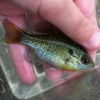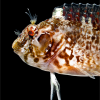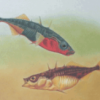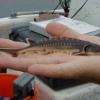"What I'm going by is the scientific use of the term, which includes designating a species based on having a unique trait not shared by other members of the same species as well as living in as an isolated population."
I think you will find that there is no universally agreed upon definition of a species. This is why I recommended reading up on the biological species concept (as well as other species concepts). It really will help shed some light on this for you.
"As for your Goby example. Are you assuming this about all the members of that species wherever it is found, or just that pond? If this proves to be the case for this gobi, and not just those in that pond, then no it would not be a new species. All you did was discover an ability ALL the members of the current species share."
You should read:
OCCURRENCE, REPRODUCTION, AND POPULATION GENETICS OF THE ESTUARINE MUD CRAB, RHITHROPANOPEUS HARRISII (GOULD) (DECAPODA, PANOPIDAE) IN TEXAS FRESHWATER RESERVOIRS
TERRENCE BOYLE JR., DONALD KEITH and RUSSELL PFAU
Crustaceana
Vol. 83, No. 4 (April 2010), pp. 493-505
There are a few ideas about how these crabs managed to colonize different fw habitats. One of the authors conclusions is that it has possibly happened multiple times based on a dozen different haplotypes found in the area. If his is true, it means that fw colonization is an ability of the species at large (although not necessarily to every population).
Forget about the goby though, that was just hyperbole. If you can't access that paper, pm me.
" In this case, there are no other cases on the books of these crabs breeding in fresh water across its range in the Gulf of Mexico drainage"
Yes there are, granted in the same area of texas though. Researchers aren't sure whether the other fw populations are related via a founding population that spread to other fw habitats, or if they represent other colonization efforts.
"This larvae of this crab hatch and develop in fresh water without there ever being a need for more brackish water as is often the case with long arm shrimp, especially the one found rarely now in the Rio Grand."
There are populations of euryhaline macrobrachium species known to reproduce in purely fw habitats. Admittedly, I know of no other crabs that do this.
The take away message here is that this is not a new species of animal, it is an r-selected, euryhaline species that can withstand many different habitats, and may have recently adapted to fw. Whether or not the coastal population can adapt to full fw regularly is unknown at this time.













